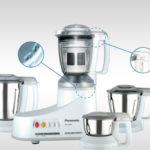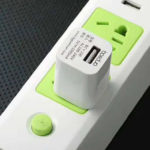Basic First Aid Principles
The general principles of first aid that must be adhered to are: Safety; do not move the victim without an initial assessment; stay calm and always seek assistance; act in unity; prevent infection by wearing gloves or using plastic bags when in contact with wounds, and wash your hands before and after first aid; properly dispose of any used materials after first aid.
Note: Do not wash your hands with sugary drinks or water, and avoid washing your hands in canals, ditches, ponds, or lakes, especially stagnant water, as they may contain bacteria that increase the risk of infection.
Steps to Perform First Aid
First aid should be performed in the following steps: Assess the scene; conduct an initial assessment of the victim’s condition; call for assistance (113, 114, 115) before providing first aid and transporting the victim. When calling an emergency number, introduce yourself and provide your phone number, describe the type of accident, injuries, and severity; the number, gender, and age of the victims; any dangerous situations at the scene, such as fire, explosion, or toxic substances; and the exact location of the accident.
In cases of labor accidents or traffic accidents, always pay attention to the cervical spine to avoid causing complete paralysis due to improper first aid. If it is unclear whether a traffic accident victim has a cervical spine fracture, keep them still and immobilize their neck with a hard object such as a splint, a piece of wood, or even two bricks on either side, until medical personnel arrive.

Doctors from Bach Mai Hospital guide on initial first aid response. Photo: BVCC
Basic Cardiopulmonary Resuscitation Steps for Victims
To support emergency response for those who are unfortunate enough to be involved in an accident, follow these steps: Assess the scene – Initial Assessment – Call for Assistance – Perform First Aid and Transport. First, ensure that the scene is safe for you to proceed with resuscitating the victim (quickly look for potential dangers such as fire, explosion, electricity, toxic gas, etc.). At the same time, assess the victim’s consciousness by stimulating and asking loudly if they are okay. Observe their chest and body to determine if they are moving or breathing normally.
After ensuring safety, pay attention to the following three scenarios. If the victim is still conscious and alert, we should place them in the most comfortable position to facilitate recovery. For an unconscious victim who still has a pulse and is breathing, place them in the recovery position (on their side) if there is no spinal injury, to protect their airway. For an unconscious victim who is not breathing and has no pulse, it is crucial to know and perform the basic cardiopulmonary resuscitation procedure.
In cardiopulmonary resuscitation, first, call for emergency services and place the victim on a hard, flat surface, lying on their back. When performing chest compressions, pay attention to the location, rate, and force applied. The frequency should be 100-120 compressions per minute, with sufficient force to depress the chest by 5 cm. The correct compression site is the lower half of the sternum or between the nipples. The correct position for the rescuer is to kneel beside the victim, with the arm perpendicular to the victim’s body. Perform 30 chest compressions followed by 2 breaths.
Doctor Hung also noted that during first aid, it is essential to pay attention to the victim’s airway. Specifically, check for any foreign objects, dentures, or mucus that may be obstructing the airway. If present, clear the airway. Additionally, while providing first aid, call for emergency services (115) by shouting for help. If you are alone, use the loudspeaker function on your phone to communicate and receive continuous guidance while assisting the victim.
Source: PNTĐ Newspaper
Explore 12 Amazing Destinations for Biking Trips
Unlock Vietnam in a brand new way with an exciting biking tour! Discover the stunning beauty of the country with Dien May XANH’s top 12 must-see destinations. From sweeping plains to clear blue beaches and mountainous vistas – experience all the sights with your own personal cycling tour. Find your ideal route and set out for an adventure today!
How to Cut Down on Fuel Usage When Cooking
Families across the nation are striving to find ways to maximize their cost savings while still guaranteeing safety when utilizing a gas stove.






































